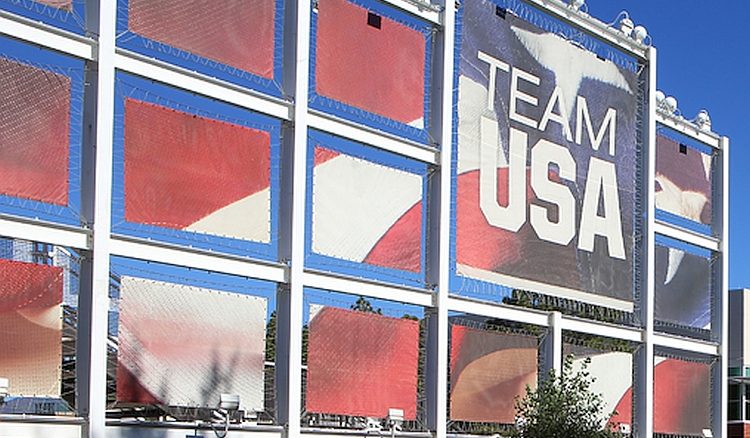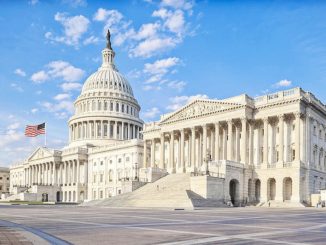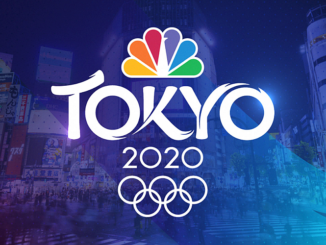
● From our sister site, TheSportsExaminer.com ●
The Aspen Institute’s Project Play program posted a link to a detailed July poll compiled by Survey USA of 1,000 U.S. adults on behalf of the Commission on the State of the U.S. Olympics and Paralympics, asking about the state of sport in the U.S. and about the United States Olympic and Paralympic Committee.
The overall takeaways from the 53-question survey are that sport is important in the U.S., but that Americans know very little about Olympic sports and how they are administered in the country. Some highlights:
● Asked whether sports was important in the U.S., 81% agreed vs. 6% who didn’t, with 13% not sure. However, only 34-38% reported that they or their children participated in youth or recreational sports. 43% reported not participating in any sports.
● A staggering 98% said it was important that “your child’s coaches and other sports staff are trained in safety practices and have undergone background checks.” And 87% said that athletes and staff safety was a priority.
● As to costs, 49% said they had struggled to afford their child’s participation (fees, equipment, uniforms), but 48% said they had not.
Multiple questions were asked about the Olympic and Paralympic Games in general and the Los Angeles 2028 Games in specific:
● An impressive 78% view the 2028 Games positively, with 4% against and 18% not sure. Asked for the reasons, 74% cited economic impact, but everything else drew only middling interest. Just 53% thought the Games would engender a positive view of the U.S.; 53% thought it would increase national pride and unity and only 49% said it would increase tourism.
Even those who liked the Games thought economic development projects related to the Games were hardly helpful: 59% said they were not. Almost 60% of those who were against the Games – 21 of 36 people – cited costs as a major reason for their disdain. Of that 36-person group, 75% were not concerned about “displacement of vulnerable populations,” an aspect constantly asserted by naysaying groups.
Over the preceding decade, 56% said their enthusiasm for the Olympics and Paralympics has stayed the same, with 27% saying it has increased and decreased for 14%.
The survey showed huge gaps in American understanding of how Olympic, Paralympic and youth sports are organized:
● Some 43% said they did not know what organization was charged by Congress to coordinate “amateur sports activity” in the U.S. The USOPC was named by just 21%, the President’s Council on Physical Fitness was cited by 16% and the NCAA by 9%.
Moreover, 70% said they had no idea that the USOPC and the U.S. National Governing Bodies impacted youth sports in the U.S. Only 20% said yes. But 81% said promoting and supporting youth sports in the U.S. was important.
● Accessibility to sport for underserved communities was important to 84% of those polled and the involvement of current and former athletes in decisions was supported by 78%.
And there is very little understanding of exactly what the USOPC and athletes are doing:
● The consensus of how much money the USOPC raises from corporate partners was $537 million annually; the report cited the 2021 total of $205 million. Respondents said athletes who win Olympic or Paralympic gold medals get $423,000; the USOPC’s Operation Gold pays $37,500.
There were also strong opinions on doping in sports, with 90% agreeing that doping should be prohibited and 69% supporting the work of the U.S. Center for SafeSport as at least somewhat effective. But:
● 52% thought that reforms undertaken in response to the Larry Nassar scandal need to go further, vs. 25-27% who think the reforms are good and about 25% who were not sure. And 87% want continued reforms to be implemented over time.
● There were 31% whose opinion of the USOPC has improved since the reforms, vs. 12% saying it’s worse now and 57% saying it’s the same or not sure.
Several questions asked about public funding of sport, with 52% saying that more money for youth and school sports was the best use; 14% said Olympic athletes and 7% said Paralympic athletes.
Raising money was another issue, with 17% suggesting more corporate sponsorships (the USOPC would be happy to hear any ideas), 16% for grants and subsidies and 11% for lottery funds. A tax on sports betting attracted 9% interest.
Near the end, a question on whether someone other than the USOPC should take over youth and community sports in the U.S. drew a near-majority of 49%, vs. 16% against and 35% who said it would make no difference or were not sure.
Observed: That the USOPC is a near-national secret is hardly a surprise, since it holds no national events, but there were encouraging confirmations in this poll on the importance of safety in sport and a positive view of the LA28 Games by 78-4%.
Possibly the most important finding was in question 52 on whether another organization besides the USOPC should be responsible for community and youth sport, with 49% support. The question will be who, how funded and how would such an entity govern intensely private-sector efforts such as Little League, AYSO and other youth programs.
The poll also did not touch directly on the role of schools and the existence – or lack thereof – of physical education programs which have been cut in many places for funding shortfall reasons. This is an area which the Aspen Institute has been working on and is trying to come up with policy options for future consideration by the U.S. Congress.
Good for the CSUSOP for commissioning this, providing a disciplined insight into an area which has been subject to speculation, but almost no hard data for decades.
~ Rich Perelman




Be the first to comment